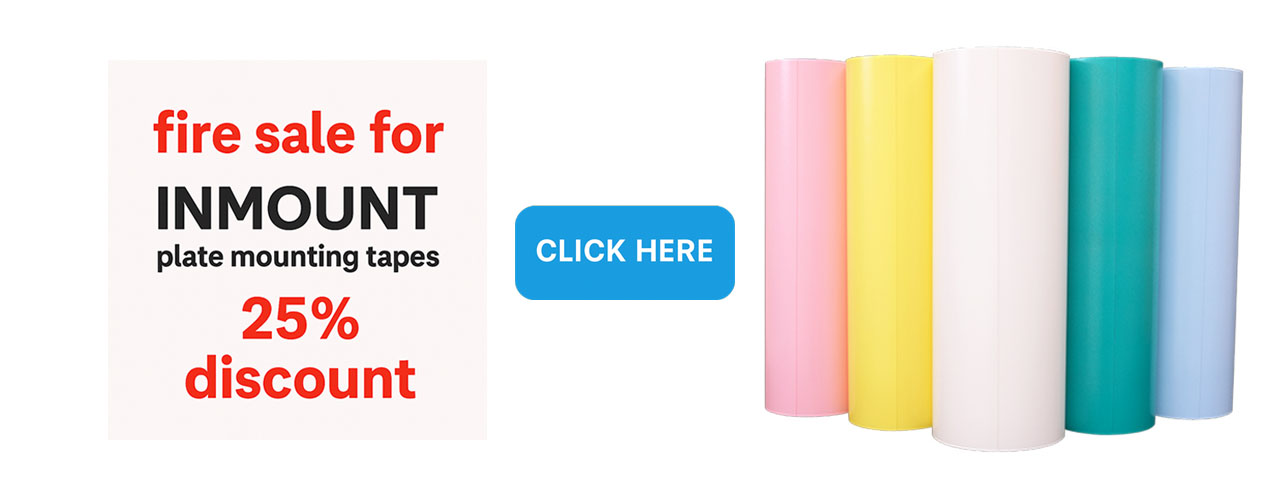This article is part of the FLEXO FLAW FIXING series
In the sophisticated arena of flexo printing, achieving flawless print quality is paramount for those who are committed to delivering high-quality packaging and labels. However, various printing defects can mar this pursuit, among which ink mottling in flexo printing stands out as a particularly vexing challenge.
By providing a comprehensive exploration of ink mottling within the context of the flexo printing industry, we hope this article could enlighten those embarking on or already navigating this business. The focus will include a detailed understanding of what ink mottling is, its potential causes, and the respective mitigation strategies to ensure optimal print quality.
Understanding Ink Mottling in Flexo Printing
Visually, ink mottling appears as uneven distribution of ink, with areas of lighter and darker coloration interspersed irregularly across what should be a seamless, solid print area. This makes the print look splotchy or clouded, lacking the crisp, uniform appearance that high-quality flexographic printing seeks to achieve.
The inconsistent, spotted, or marbled effect within solid areas of a print leads to a mottled appearance that detracts from the overall quality and uniformity of the printed product. This defect is particularly noticeable in large, solid areas of colour where uniformity is critical. Mottling can significantly impact the aesthetic appeal of the print, potentially affecting the perception of the product’s quality in the consumer’s eye.
Potential Causes and Mitigations
A variety of factors can contribute to ink mottling, each requiring specific remedies to ensure the delivery of high-quality prints. By understanding and addressing these causes, flexo printing businesses can significantly reduce the occurrence of ink mottling.
Cloudy or Uneven Printing Plate Surface
- Cause: The printing plate’s surface may become uneven or cloudy over time due to wear and tear or improper storage, impacting ink transfer.
- Remedy: Regularly inspect and maintain printing plates. When degradation is observed, creating a new printing plate is crucial to maintain print quality.
Ink Viscosity Issues
- Cause: Incorrect ink viscosity, either too low or too high, affects ink transfer and absorption, leading to mottling.
- Remedy: Routine checks and adjustments of ink viscosity are necessary. Adding fresh ink or solvent can help adjust the viscosity to the optimal level for the substrate and printing conditions.
Soiled Ink
- Cause: Contaminated or degraded ink can introduce inconsistencies in print quality.
- Remedy: Filtering the ink or opting for fresh ink batches ensures that only clean, quality ink is used, significantly reducing the risk of mottling.
Foreign Bodies on the Cylinder or Anilox Roller
- Cause: Impurities or foreign bodies adhering to the plate cylinder or anilox roller can disrupt ink transfer.
- Remedy: Maintaining a clean printing environment and regularly inspecting and cleaning the plate cylinder and anilox roller are essential steps to prevent ink mottling caused by contamination.
Uneven Substrate Surface
- Cause: Substrates with uneven surfaces can result in inconsistent ink transfer, leading to mottling.
- Remedy: Selecting high-quality, even, and smooth substrates is critical. Conducting thorough checks for substrate uniformity before printing can mitigate this issue.
Incorrect Doctor Blade Pressure
- Cause: Doctor blades regulate the ink film thickness on the anilox roller; incorrect pressure settings can lead to uneven ink application.
- Remedy: Regular calibration and adjustment of doctor blade pressure to the appropriate levels for the specific job and ink used can mitigate mottling.
Beyond addressing specific causes, implementing a systematic quality control process is crucial in preventing ink mottling. Regular training for technical staff on the nuances of ink management, printing plate care, and machinery maintenance can pre-empt many issues. Additionally, investing in high-quality printing materials and equipment contributes to reducing the occurrence of printing defects, including mottling.
Conclusion
Ink mottling is a complex issue within the flexo printing industry that demands a detailed understanding and a proactive approach to mitigation. By comprehensively addressing the potential causes outlined here – ranging from printing plate condition and ink viscosity to substrate uniformity and machinery maintenance – businesses can significantly enhance their print quality. Through such dedicated efforts, achieving consistently high-quality prints devoid of mottling becomes not only feasible but a tangible hallmark of excellence in the flexo printing industry.


![[Flexo Flaw Fixing] Ink Mottling](https://flexopedia.net/wp-content/uploads/2022/06/Mottled_Print.png)
![[Flexo Flaw Fixing] Pinholing](https://flexopedia.net/wp-content/uploads/2022/06/048_Pinhole.png)
![[Flexo Flaw Fixing] Ink Spitting](https://flexopedia.net/wp-content/uploads/2022/11/068_Dirty_Print-jpeg.webp)
![[Flexo Flaw Fixing] Misregistration](https://flexopedia.net/wp-content/uploads/2022/06/049_Misregistration_CMYK.png)
![[Flexo Flaw Fixing] Inconsistent Repeat Length](https://flexopedia.net/wp-content/uploads/2023/06/066_Repeat_Length-jpg-e1704202472468.webp)